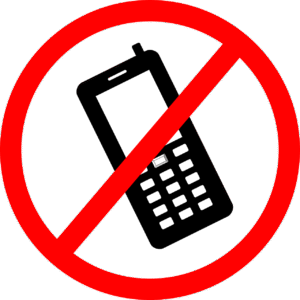After the government banned cell phones in schools this past year, I’ve now had a full year to experience a “cell phone–free” classroom. The school I’m currently at didn’t have major issues with phones to begin with, so the shift didn’t make a dramatic difference in terms of behavior. However, I did feel the impact was in their potential use for educational purposes.
The recent class debate on this topic raised compelling points on both sides. In the end, though, I personally believe that elementary and middle years students should be allowed to have phones in the classroom with clear boundaries and consistent rules in place.
The pro-ban side emphasized five main arguments: phones are designed to capture attention, they harm student well-being, teachers shouldn’t have to be “phone police,” teens struggle with self-regulation, and phones are a major source of distraction. The one article they shared from the National Center for Education Statistics confirms these points with a lot of interesting facts and data driven information. I’m actually shocked that more than 50% of school leaders agree that cell phones in the classroom hurt academic performance.
To be honest, I fully agree with all of these concerns. Still, I believe many of them, though not all, can be addressed through proper classroom management. Establishing rules and routines is a key part of setting up a classroom in the first few weeks of school. When I worked at a previous school where students were permitted to have phones, we implemented a simple routine: phones were placed in a drawer upon entering the classroom. Of course, there was some resistance at first, but consistency and teacher follow-through helped build a routine that worked. I understand this isn’t feasible for every classroom or every teacher, especially if the teacher struggles with managing their own device use, but banning phones entirely feels like punishing everyone for the actions of a few.
6 Reasons Why Kids Need Phones in Schools
My main concern with the ban was less about misuse and more about losing access to a valuable classroom tool (but the 6 Reasons Why was an interesting read from a parents’ perspective). Phones could be useful for assignments and projects, especially when it came to taking photos or videos for presentations. While it was never a requirement for students to use their phones, it was helpful to have them as a backup option when computers were unavailable, or the Wi-Fi wasn’t working. That flexibility is something I genuinely miss.
Ultimately, the decision around phone use is out of our hands as educators. And yes, we’ve managed just fine this past year without them, though at times it’s required more creativity and flexibility. Still, I wonder: if students aren’t taught now, at a young age, how to manage their phones responsibly, when to use them, how they can be used for learning, then when will they learn? In my opinion, teaching responsible use is part of preparing them for the real world.
Great work by all the debaters this week! Enjoy your evening 🙂




